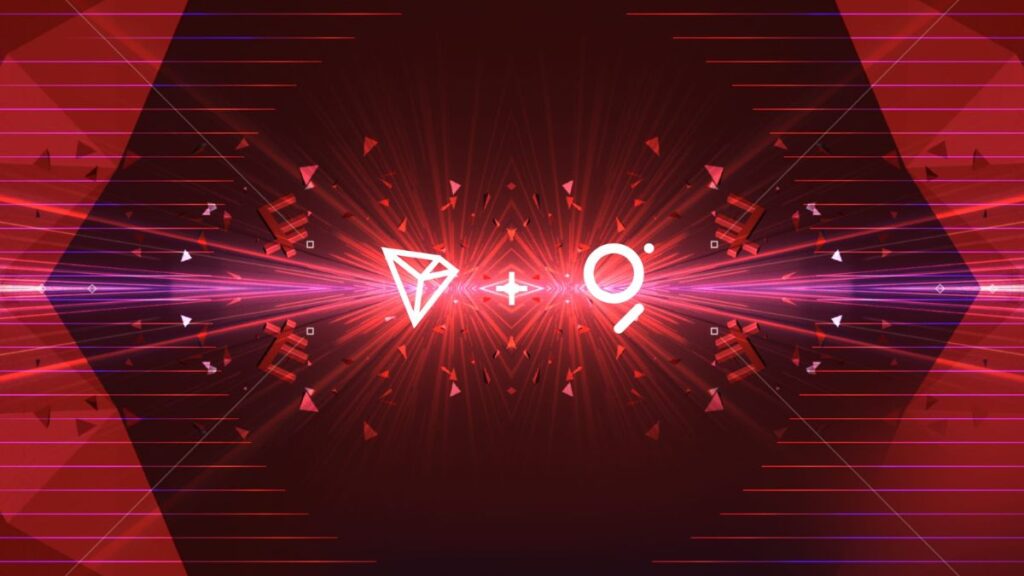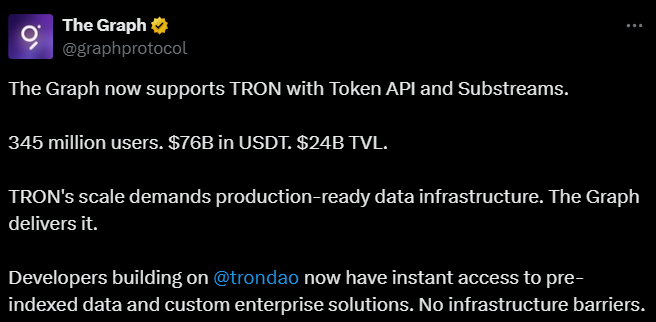TL;DR
- The Graph has integrated the TRON network and activated both the Token API and Substreams, a toolkit that redefines how teams access and organize on-chain data.
- The Token API delivers ready-to-use data and connects apps with DEXs like JustSwap and SunSwap, eliminating the need for custom indexers and cutting weeks of development.
- Substreams gives developers full control over data flows and supports high-performance workloads, a key requirement for a TRON network that moves over $25B per day.
The Graph added TRON to its data infrastructure and enabled two tools that will transform how teams access on-chain information: the Token API and Substreams.
What does the Token API do?
The Token API provides ready-to-use data and removes the need to build and maintain custom indexers. Developers can instantly retrieve balances, prices, swaps, and DEX activity, and connect to platforms such as JustSwap, SunSwap, and SunPump without creating pipelines or running additional servers.
This integration shortens development timelines for products that depend on critical data. A wallet can display prices and real-time activity without performing its own calculations. A block explorer can rebuild address and contract activity without running indexing processes. A lending protocol can monitor collateral and liquidity without internal infrastructure. Every Token API endpoint is production-ready, reducing weeks of engineering to a simple connection.
What does Substreams do?
Substreams serves a different purpose. It targets teams that need full control over data processing and offers TRON-specific modules. Developers can define how balances, transactions, and price data are processed and decide how those datasets are stored within their systems.
The tool is designed for demanding workloads: real-time analytics, AI engines, gaming economies, DePIN infrastructures, or trading strategies that require thousands of events per second. Institutions can also run Substreams in their own environments and customize modules to meet audit and internal reporting requirements without relying on external services.
The Graph Stabilizes TRON’s Data Flow
TRON’s metrics explain why this integration was necessary. The network moves more than $25 billion per day, maintains over 345 million active accounts, and hosts more than $76 billion in USDT. This volume requires an infrastructure capable of delivering consistent, stable, and fast data — something homegrown indexers cannot sustain at scale. The Graph fills that gap and stabilizes data access across the entire network.
Documentation for both the Token API and Substreams is already available. The Graph team, led by Pinax, will expand support for additional DEXs and assets depending on ecosystem demand. The integration allows developers to build on TRON without worrying about the data layer and to focus their time on application logic.













